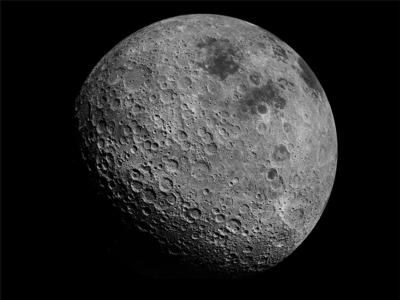Hysuton, Mondai ga Hassei Shimashita
Japanese lunar exploration start-up ispace has failed in a valiant effort to land the first privately funded exploratory platform on the surface of Earth’s moon.

The Tokyo-headquartered company’s unmanned HAKUTO-R Mission-1 lunar lander—called the Series-1 lander for simplicity’s sake—was scheduled to touch-down on the lunar surface at approximately 22:10 India Standard Time (IST) on the night of 25 April 2023.
Regrettably, communication between the lander and ispace’s Mission Control Center in Nihonbashi, Tokyo, was lost on 26 April at 04:30 IST. Communication between controllers and the spacecraft was expected to remain intact throughout the latter’s approach to and landing on the lunar surface.
ispace set forth in a statement: "It has been determined that there is a high probability that the lander eventually made a hard landing on the Moon's surface.”
The company stated, also, that its engineers are about the fiddly work of making a detailed analysis of the telemetry data acquired during the lander’s final moments for purpose of determining why the attempted landing failed.
ispace CEO and founder Takeshi Hakamada remarked: “Although we do not expect to complete the lunar landing at this time, we believe that we have fully accomplished the significance of this mission, having acquired a great deal of data and experience.”
Mr. Hakamada added: "What is important is to feed this knowledge and learning back to Mission 2 and beyond.”
Hakamada’s optimistic sentiments echo those of SpaceX boss Elon Musk’s in the moments following the 20 April loss of the company’s Starship heavy-lift prototype.
Notwithstanding the setback, ispace intends to attempt two further lunar landings in short-order.
HAKUTO-R—a sophisticated bit of kit standing just over two-meters tall and massing some 750-pounds—began its journey to Earth’s moon in December 2022. The vessel launched from Florida’s Cape Canaveral aboard a SpaceX Falcon 9 rocket, bound for a landing site near the Atlas Crater in the moon’s northeastern quadrant,
The communication breakdown between Tokyo and the lander occurred subsequent the calculated exhaustion of the craft’s propellent supply. Effectively out of fuel, HAKUTO-R’s descent-rate increased rapidly, compelling ispace engineers to posit it had suffered a hard, likely catastrophic, landing on the lunar surface.
HAKUTO-R’s descent and landing were fully automated by design. The craft was to have reestablished communication with its earthbound controllers following touch-down—a survivable touch-down, anyway.
To date, only the United States, Russia, and China have landed spacecraft on the lunar surface—all by dint of government programs.
Landers dispatched by India and Israel were lost attempting lunar landings in 2016 and 2019 respectively.
Two U.S. companies, Astrobotic and Intuitive Machines, are slated to attempt Moon landings in 2023.
In a tweet, Astrobotic stated: "We congratulate the ispace team on accomplishing a significant number of milestones on their way to today's landing attempt. We hope everyone recognizes … today is not the day to shy away from pursuing the lunar frontier, but a chance to learn from adversity and push forward."

Hakuto-R, the name of which references the Moon-dwelling white rabbit of Japanese folklore, carried several lunar rovers, including a spherical, baseball-sized robot jointly developed by Japan's space agency and toy manufacturer Takara Tomy, creator of the Transformer toys. The lander also bore a ten-kilogram (22-pound) rover developed by the United Arab Emirates, as well as an experimental imaging system devised by Canadian-owned and managed space systems firm Canadensys Aerospace.
ispace asserts it "aims to extend the sphere of human life into space and create a sustainable world by providing high-frequency, low-cost transportation services to the Moon."
Mr. Hakamada opined the failed Hakuto-R mission laid "the groundwork for unleashing the Moon's potential and transforming it into a robust and vibrant economic system."
Hakamada and his staff of approximately two-hundred aerospace professionals believe the moon will support a permanent human population of one-thousand individuals by 2040, with ten-thousand additional souls visiting yearly.
Japan’s ispace should not be confused with China’s i-Space—a Beijing-based, private space technology concern.
 ANN's Daily Aero-Term (05.10.24): Takeoff Roll
ANN's Daily Aero-Term (05.10.24): Takeoff Roll Aero-News: Quote of the Day (05.10.24)
Aero-News: Quote of the Day (05.10.24) Aero-News: Quote of the Day (05.11.24)
Aero-News: Quote of the Day (05.11.24) ANN's Daily Aero-Term (05.11.24): IDENT Feature
ANN's Daily Aero-Term (05.11.24): IDENT Feature ANN's Daily Aero-Linx (05.11.24)
ANN's Daily Aero-Linx (05.11.24)




